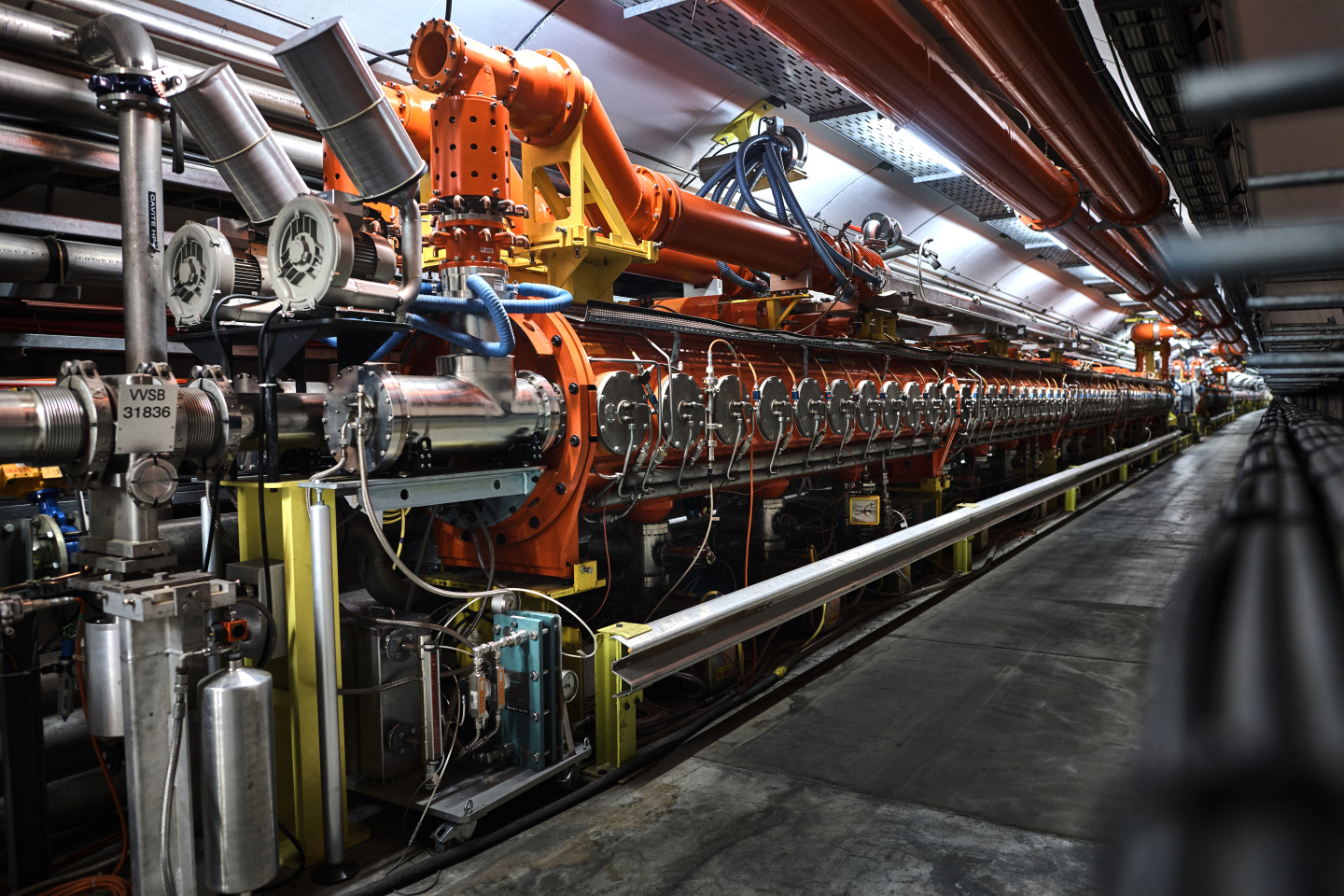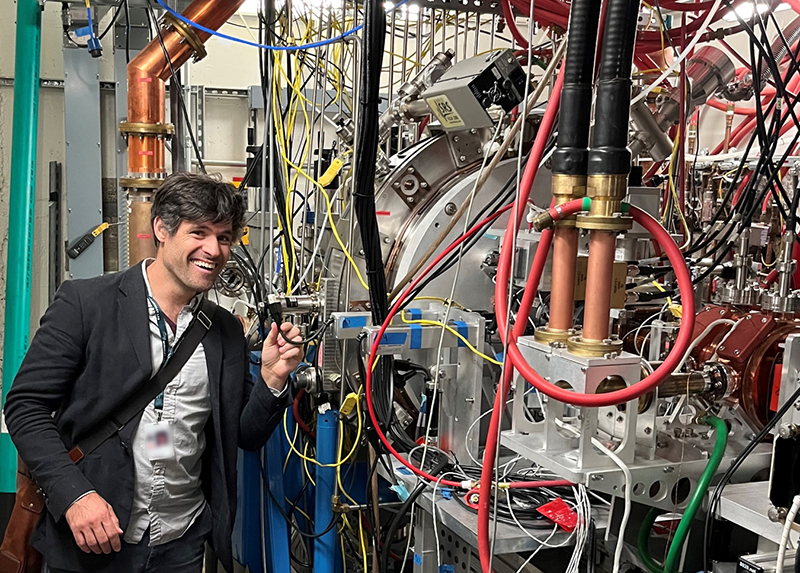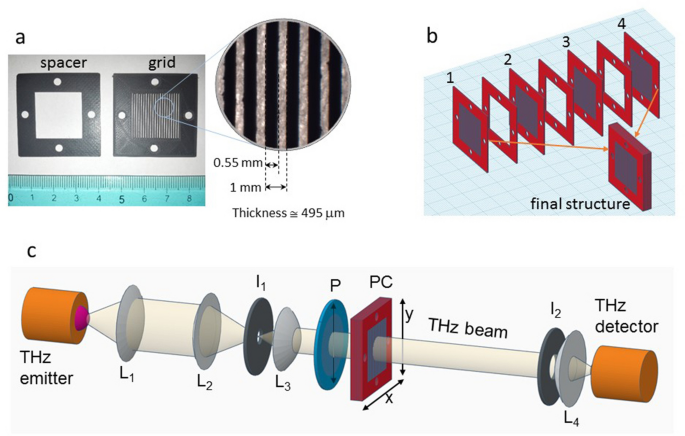Precision in Motion:
The Evolution of RF Superconducting Cavity Tuners
From mechanical actuators to AI-driven control systems, explore the technological transformation shaping the future of particle acceleration.

Executive Summary
RF superconducting cavity tuners have undergone a remarkable transformation, evolving from simple mechanical systems to sophisticated, AI-enhanced control architectures. This evolution addresses the increasingly demanding requirements of modern particle accelerators for precision, stability, and operational efficiency.
Hardware Innovation
Transition from mechanical actuators to non-contact ferroelectric tuners with microsecond response times
AI Integration
Machine learning algorithms achieving 10 Hz frequency stability through adaptive control systems
Material Science
Nb₃Sn and advanced superconductors enabling higher temperature operation and enhanced performance
Key Performance Metrics
- Traditional Mechanical Tuners: ±1-2 MHz range, seconds response time
- Piezoelectric Fast Tuners: ±50 kHz range, millisecond response
- Ferroelectric Tuners: Microsecond response, non-contact operation
- AI-Controlled Systems: 10 Hz stability, adaptive compensation
Hardware Development and Current Status
Tuner Mechanisms
Traditional Systems
Slow Tuners
Stepper motor-driven mechanical systems for coarse frequency adjustments
Fast Tuners
Piezoelectric (PZT) and magnetostrictive actuators for dynamic compensation
Emerging Technologies
Cavity Tuners
Non-contact electromagnetic coupling with auxiliary resonant structures
Ferroelectric FRTs
Ultra-fast electronic tuning using dielectric constant modulation
Materials Evolution
Tuner Construction
- • High-strength stainless steels
- • Titanium alloys
- • Specialized PZT ceramics
- • Terfenol-D magnetostrictive
- • Barium strontium titanate (BST)
Cavity Materials
- • High-purity niobium (Nb)
- • Large-grain/single-crystal Nb
- • Niobium-tin (Nb₃Sn) coatings
- • Magnesium diboride (MgB₂)
- • High-temperature superconductors
Material Properties
Traditional workhorse
Higher temperature operation
Liquid nitrogen compatible
Software and Control Algorithms
Control Algorithm Evolution
Traditional Approaches
PID Controllers
Proportional-Integral-Derivative control for basic feedback stabilization
Feedforward Control
Proactive disturbance compensation using measured inputs
NANC techniques for microphonics reduction
AI-Enhanced Systems
Gaussian Processes
Bayesian modeling for predictive control with uncertainty quantification
Deep Neural Networks
Complex pattern recognition and direct inverse control mapping
Feedback System Architecture
Sensing Components
- • Phase detectors
- • RF mixers
- • Analog-to-digital converters
- • Frequency discriminators
Processing Units
- • Digital Signal Processors
- • Field-Programmable Gate Arrays
- • Microprocessors
- • High-Performance Computing
Actuation Systems
- • Digital-to-analog converters
- • High-voltage amplifiers
- • Piezoelectric drivers
- • Electromagnetic actuators
Key Challenges in Control Systems
Mechanical Eigenmodes
Structural resonances can cause instability and require careful loop shaping with notch filters
Time Delay Effects
Signal processing delays limit achievable bandwidth and require advanced compensation techniques
Future Trends and Emerging Technologies
AI in Control Systems

Adaptive Tuning Algorithms
Dynamic optimization of control parameters using real-time sensor data and learned system behavior patterns.
Predictive Maintenance
AI algorithms trained on historical data to identify fault precursors and enable proactive interventions.
- • Quench prediction and prevention
- • Automated fault diagnosis
- • Optimized maintenance scheduling
Reinforcement Learning
Autonomous agents learning optimal control policies through system interaction and feedback.
Real-Time Optimization
Microsecond-scale control decisions for Lorentz force detuning compensation and beam stability.
New Superconducting Materials
Niobium-Tin (Nb₃Sn)
Enables 4.2 K operation with potential for higher accelerating gradients
High-Temperature SC
Potential for dramatic cryogenic system simplification
Alternative Materials
- • MgB₂: Balanced Tc and fabrication
- • Iron-based SC: Exploratory research
- • Nitrogen-doped Nb: Enhanced Q-factor
Other Emerging Technologies
Fast Non-Mechanical Tuning
Ferroelectric FRTs
Electric field control of dielectric properties for microsecond response
Advanced Manufacturing
- • Additive manufacturing (3D printing) of RF components
- • Integrated tuner-cavity designs
- • Customized geometries for optimized performance
- • Reduced part counts and assembly complexity
Surface Treatment Technologies
- • Ultra-smooth surface finishing techniques
- • Specialized coatings for secondary electron suppression
- • Enhanced thermal conductivity treatments
- • Nb₃Sn coating uniformity optimization
Advanced Diagnostics
High-Speed Data Acquisition
Real-time cavity detuning computation from RF power probes
Pulse-to-Pulse Correction
Intra-pulse detuning control beyond simple feedforward

Conclusions and Outlook
The evolution of RF superconducting cavity tuners represents a convergence of advanced materials science, precision engineering, and artificial intelligence. This technological transformation is enabling unprecedented levels of control and stability in particle accelerator systems.
Key Achievements
- • Transition from mechanical to non-contact tuning
- • AI-driven adaptive control systems
- • Ferroelectric tuners with microsecond response
- • Nb₃Sn material development for higher temperature operation
- • Integrated hardware-software control architectures
Future Directions
- • Widespread AI integration in control systems
- • Commercial adoption of high-temperature superconductors
- • Additive manufacturing of complex RF components
- • Autonomous operation and predictive maintenance
- • Quantum-inspired control algorithms
The Path Forward
As we look toward the next generation of particle accelerators, the continued integration of advanced materials, AI-driven control systems, and novel tuning mechanisms will be essential for achieving the performance goals of future high-energy physics experiments. The convergence of these technologies promises to deliver more compact, efficient, and cost-effective accelerator systems that will drive scientific discovery for decades to come.